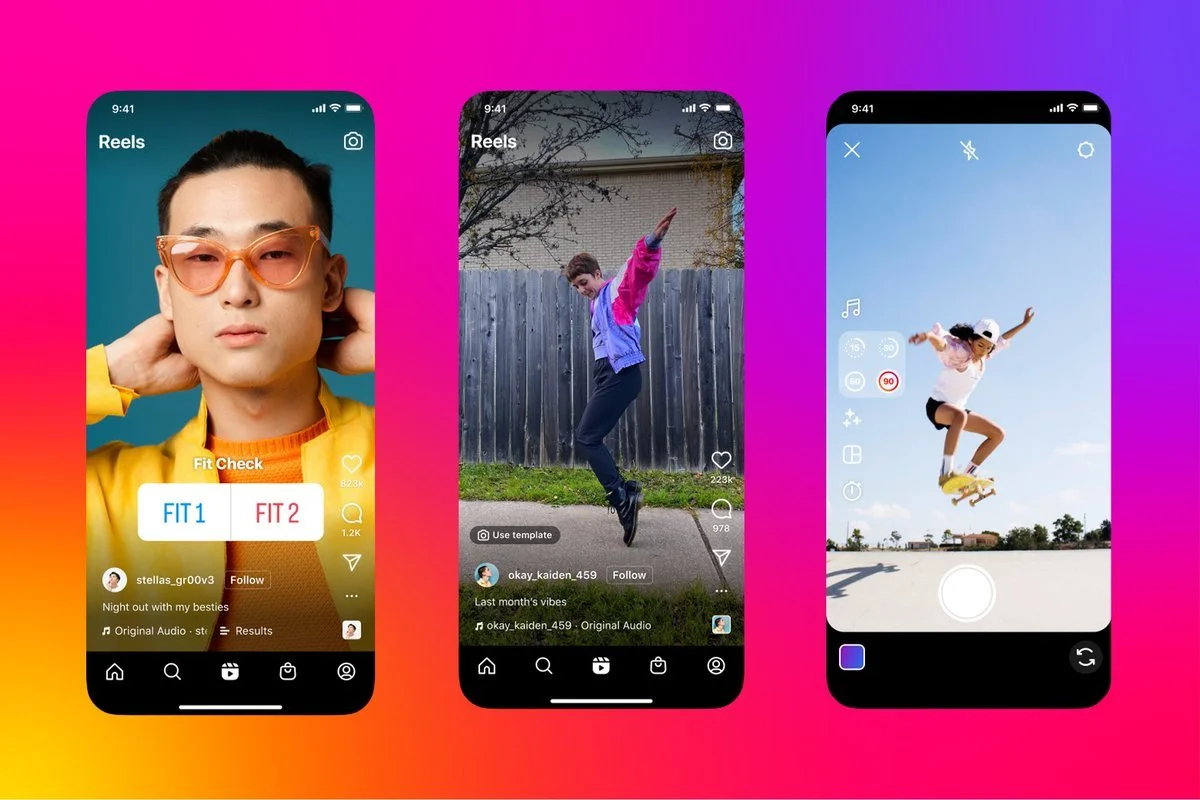How does the Instagram algorithm work now?
The shift towards short-form video and paid social
It has long been expected that Instagram (and Meta) would push harder to compete with TikTok and to monetise the platform further. But in the last few months and even years, brands and creators have seen a steady decline in organic reach, particularly with feed posts and Stories.
In fact, Later.com’s research suggests that the average engagement rate for feed posts (excluding Reels and IGTV) has decreased by 44% since 2019. The graphic below illustrates this perfectly and you can see how that statistic has played out.
Source: Later.com
Their research into 81M Instagram posts, shows that the average engagement rate for feed posts in 2019 was 5.16%. By the end of 2021, this number decreased to 2.88%.
So, firstly it’s reassuring to know that it’s not you, it’s them. But then having taken that time to craft your posts week in and week out, it’s frustrating to see this decline and disheartening for many when they realise one of two things: you have to start thinking about short-form videos and paid social media to make any sort of impact.
We’ve long been advocates of genuine and organic interactions on Instagram but there’s been a noticeable shift, particularly in the last 3 months, and we’ve been working with our clients to make the switch towards Reels particularly.
Importantly, feed and Story posts are only likely to be seen by a smaller number of your followers whereas your Reels and anything that appears in the Explore tab will be seen by a wider audience that doesn’t necessarily follow you which makes it easier for them to discover (and hopefully follow) your account.
A Reel challenge
People can often still find Reels a daunting prospect but rest assured, you’re not expected to start dancing your way through your feed! Yes, you might have to think more laterally about how you apply the creativity Reels suggests you need but the good news is that you don’t need to be creating complex transitions, arty video content or to-camera pieces all the time.
The other good news is that just in the last week, Instagram now allows you to use others templates. Look out for the ‘Use template’ sticker on others’ Reels and it pre-populates your Reel template with the correct frames and timings ready for you to add your own - life saver!
Other updates include Reel length extending to up to 90 seconds, the ability to add stickers and the ability to import your own audio.
Source: Instagram
How to start creating your Reels
Our first and best advice is to start watching more of them. Start learning what you like and what you think could work for your audiences. How can you adapt a concept and make it your own? This is a great way to see where people are creating Reels that your audience might be looking at too so it’s a great place to start.
Take a look at trending audio too. Start by going to create a Reel and selecting the audio button. You’re presented with a list of audio tracks and you’ll see next to them how many people have used that track to create a Reel. [Whispers…] you can also look at trending audio on TikTok too to see what’s coming down the track (no pun intended) on Instagram.
Think about themes for your content
This is a great way to start grouping your ideas and content and allows you to create your own ‘templates’ for particular areas. For example, you might have colour trends and group content by colour, room trends or pattern trends. You could also group product ranges by type, colour/finish and so on. All of these will give your audiences a snapshot of your work and inspiration.
Should I use paid social?
The short answer to this question is yes! Unfortunately, Meta is pushing hard to monetise the platforms it owns so paid social is being encouraged all the time.
This comes in two forms on Instagram:
Boosted posts
Planned ad campaigns
The former is something most will be familiar with. It involves putting spend behind your existing posts to encourage reach and engagement. We’d recommend starting with test budgets of £15 - £30 a post to see which posts work best and get you the most traction. This will give you an idea of content ideas that work more effectively.
The latter is planned ad campaigns that have a specific goal in mind e.g. website traffic, newsletter sign-ups, purchase and so on. They are created through the Facebook ad platform and you need to set specific objectives, identify specific audiences and more. These require heftier budgets to really make a significant difference but can be highly effective.
Both the above are relevant for feed posts and Stories posts but you can’t boost Reels as yet (we suspect that will come eventually!).
It’s important to note that both require strategic thinking, particularly around the audiences you select to view these. If you aren’t sure about how to approach these, then bringing in an expert is worth doing. Our team at Sandford are very familiar with advertising so do get in touch if you want some help getting started.
What’s next for brands on Instagram?
If you’ve seen your reach and engagement take a nose-dive in recent months, then it’s important to know you’re not alone and it’s not anything you’ve suddenly started doing wrong per se. But with short-form video and paid social leading the way, it’s important to start making the shift across to Reels and monetisation as soon as you can to really encourage growth.
If you are feeling frustrated, unsure where to start and don’t necessarily have the resources to dedicate a social media manager to do the work, then get in touch with us and we’d love to help and support you.





